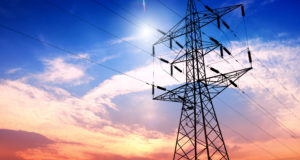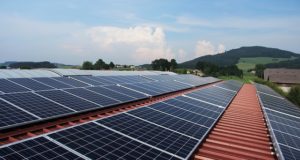 Despite the political scandals, the failed promises, and the general difficulties that new energy technologies face when trying to break the stranglehold of fossil fuels, the field of solar energy has continued to advance and expand. Past disappointments aside, at the end of the day the sun is potentially a limitless source of power, and this has encouraged entrepreneurs, inventors, engineers, and do-it-yourselfers to explore the possibilities offered by solar technology with an eagerness that may seem surprising to some. But while the path of development has not been as smooth as solar’s most ardent boosters once predicted, the irrepressible nature of solar energy and the visions of unrestricted abundance it provokes in dreamers and opportunists alike has kept the ball rolling at an ever-accelerating pace.
Despite the political scandals, the failed promises, and the general difficulties that new energy technologies face when trying to break the stranglehold of fossil fuels, the field of solar energy has continued to advance and expand. Past disappointments aside, at the end of the day the sun is potentially a limitless source of power, and this has encouraged entrepreneurs, inventors, engineers, and do-it-yourselfers to explore the possibilities offered by solar technology with an eagerness that may seem surprising to some. But while the path of development has not been as smooth as solar’s most ardent boosters once predicted, the irrepressible nature of solar energy and the visions of unrestricted abundance it provokes in dreamers and opportunists alike has kept the ball rolling at an ever-accelerating pace.
When a technology begins to blend seamlessly into its surroundings, this is a sure sign that the technology in question has reached a mature stage in its evolution. Usually, the process of development will not progress this far until an older version of a promising technology has achieved a significant degree of marketplace penetration and profitability. But in the case of solar energy, the tides of innovation are sweeping up to shore so fast that solar is already on the verge of being reinvented even though its overall impact on the energy economy has up until now been negligible.
This proves that while good ideas will eventually triumph, great ideas cannot be held back even temporarily. Building-integrated photovoltaics are the personification of the great idea, and that is why they are threatening to revolutionize the entire solar energy industry despite the fact that solar remains a road largely untraveled.
The Revolution Will Not Be Televised
The conventional approach to the harvesting of solar energy for heat and electricity involves the installation of an array of solar panels on the roof of an existing structure or in another convenient location nearby. This separation of building from system has been standard, and for a long time it was assumed this is the way it must be.
Passive solar energy, on the other hand, operates from different assumptions. Here, home and commercial design choices are made to take advantage of the sun’s inherent ability to provide heat and light, and the necessity of converting the sun’s emissions into a more usable form of energy is thus eliminated. In this case, the “solar sensibility,” as it might be called, actually shapes architectural choices, which represents a return to traditional ways of living that work with nature rather than treating it as something to be conquered or overcome.
Harness the power of the sun for your energy needs…
Building-integrated photovoltaics (BIPV) represent a brilliant synthesis between the solar sensibility that underlies the passive approach and the active principles of solar energy generation. In building-integrated photovoltaic systems, solar panels or arrays of individual photovoltaic cells are used to replace or enhance conventional materials in a building’s envelope. Theoretically, building-integrated photovoltaics could be added to architectural blueprints as readily as any other type of construction material, with the imagination being the only potential limitation on the technology’s applicability. With BIPV, solar power literally emerges from the structure itself as if by magic, after which it can be put to use in the same way as the electricity generated by a normal flat-panels solar array attached to a roof normally would be.
The ultimate example of function merged with form, building-integrated photovoltaics have the potential to alter residential and commercial construction forever, eliminating the need for solar panels that have to be purchased and installed separately. At the present time, BIPV only holds about 1 percent of the solar energy market, but as research and development continues, this percentage is virtually guaranteed to increase (and increase exponentially) over the next several years.
Thin Film: The Plot Thickens
Up until the 1990s, crystalline silicon solar panels were basically the only game in town. Solar panels with cells made from this material are heavy, rigid, and unsuitable for BIPV, but the invention of thin-film solar cells is the breakthrough that has opened up a wealth of possibilities in the BIPV subfield. Vaporized silicon or another photovoltaic material is progressively condensed onto a substrate made from metal, plastic, or glass, and the result is a solar cell that is no more than a few nanometers to a few micrometers thick. Thin-film cells deposited on a flexible material that can be bent and shaped to fit construction requirements and parameters are ideal for BIPV usage, and when the cells are encased in glass, a hybrid can be created that will give conventional glazing some brand new capabilities. Once a BIPV module has been installed, the only additional material required would be the electrical wiring required to transfer the power generated to where it is needed, but other than that, building-integrated photovoltaics can function as a straight-up replacement for conventional construction materials with no compromise on performance or structural integrity.
Thin-film building-integrated photovoltaics offer workable options for the construction or retrofitting of roofs (either pitched or flat), facades, windows, awnings, skylights, assorted glazing, atriums, greenhouses, and curtain walls – basically everything that you might find in a house or commercial building except flooring and interior walls that are not exposed to sunlight.
The purest form of BIPV is one-for-one replacement, where thin-film solar panels are substituted for the materials that would normally be used to fashion various structural elements in a building. A second form of BIPV involves the overlay of existing materials with an array of thin-film solar cells, almost as if a protective coating were being applied to seal in a façade or roof from the elements (overlain BIPV actually does provide some protection from environmental degradation, in addition to its ability to collect the sun’s energy and convert it to electricity). The third type of BIPV essentially melds thin-film solar cells with glass or plastic to form a hybrid form of glazing that allows in natural light while also harvesting a portion of the solar emissions that hit it in order to produce an electric current. The thin-film solar cells are sandwiched between two panes, but the layer they form on the interior of the glazing is transparent enough not to interfere with light’s natural through-flow.
As for the energy harvested, it can be put to use in almost any way that a home or business owner sees fit. With enough BIPV installed, a building’s entire energy needs could conceivably be filled, although in many cases the power produced is used to carry out certain specialized tasks.
Thin-Film Solar: The Good News And The Bad News
As goes thin-film solar, so will go BIPV. Like most everything else in life, thin-film solar cells have plusses and minuses, and the more successful researchers are in overcoming those minuses, the more quickly the building-integrated approach will progress.
The good news is that because thin-film solar panels require such a reduced amount of photovoltaic material in comparison to crystalline silicon, they only cost about half as much to manufacture and purchase. The cost savings are even greater when thin-film is used in building-integrated modules because they are replacing conventional construction materials, and it is this “two-for-one” aspect of BPIV that ultimately promises big savings in the long run.
But the bad news is that at the present time we must unfortunately emphasize the phrase “in the long run,” because as of right now, BIPV modules do not offer the cost advantages they might in the future when the technology improves, and that they would need to offer in order to make them a practical option for most home builders. Because thin-film cells use unrefined materials (most include amorphous non-crystalline silicon as the primary photovoltaic ingredient), they resist electrical flow to an extent that is far from ideal, and as a result, conventional flat-panel crystalline silicon solar panels are currently twice as efficient as their thin-film cousins. What this means of course is that twice as many thin-film panels must be deployed to match crystalline silicon panel production, which eats up expected cost savings right at the beginning. Complicating things further, because the whole BIPV process is still so new, there are no economies of scale to help keep production costs down. Installation experience and expertise is also still quite hard to find and therefore highly in demand, making building-integrated photovoltaics very much a seller’s market.
A further problem with BIPV relates to life span. Because building-integrated photovoltaics are not vented naturally the way solar arrays installed on roofs or on the ground are, they can get a good bit hotter than the conventional option, which is unfortunate because thin-film solar cells are more susceptible to heat-related degradation than their crystalline counterparts. And as thin-film panels degrade, they begin to malfunction, which is a problem because they are not really very efficient even when they are still pristine and in perfect working order.
Even if some of these problems are solved, and thin-film and BIPV are able to close the cost-efficiency gap with crystalline silicon, there are still some regulatory and quality-control issues that will need to be worked out. With roofing, for example, differing versions of International Building Codes have been adopted for use across the U.S., and in addition to meeting solar installation codes, BIPV set-ups must also conform to established construction standards with respect to stability, fire safety, durability, and so on. At the present time, there are still some incongruities and uncertainties here, and therefore there is no guarantee that every BIPV product currently on the market will be manufactured to fully meet every building code requirement to which it might be subject.
But while the bad news with BIPV might seem like too much to overcome, it is clear that building-integrated photovoltaics are one of those classic “it’s only a matter of time” technologies that will ultimately smash through all limitations and barriers just as surely as the sun will continue to rise in the east.
Building-Integrated Photovoltaics: Today And Tomorrow
Building-integrated photovoltaics and residential construction are a match made in heaven. Unfortunately, the technology is still so new that it has not moved past the customized stage into mass production, and as such, it is an option that most will not be able to afford at this time.
But while BIPV is currently out of the price range of most, for either new construction or retrofit, this is almost assuredly a temporary state of affairs. In fifteen to twenty years, those who are ready to go off-the-grid for good will likely be moving into homes that feature numerous building-integrated photovoltaic features, and based on how far and how fast BIPV has come already, the number of people looking to do so may be far greater than even the most pie-in-the-sky pro-solar optimist may ever have imagined.
 Off The Grid News Better Ideas For Off The Grid Living
Off The Grid News Better Ideas For Off The Grid Living




